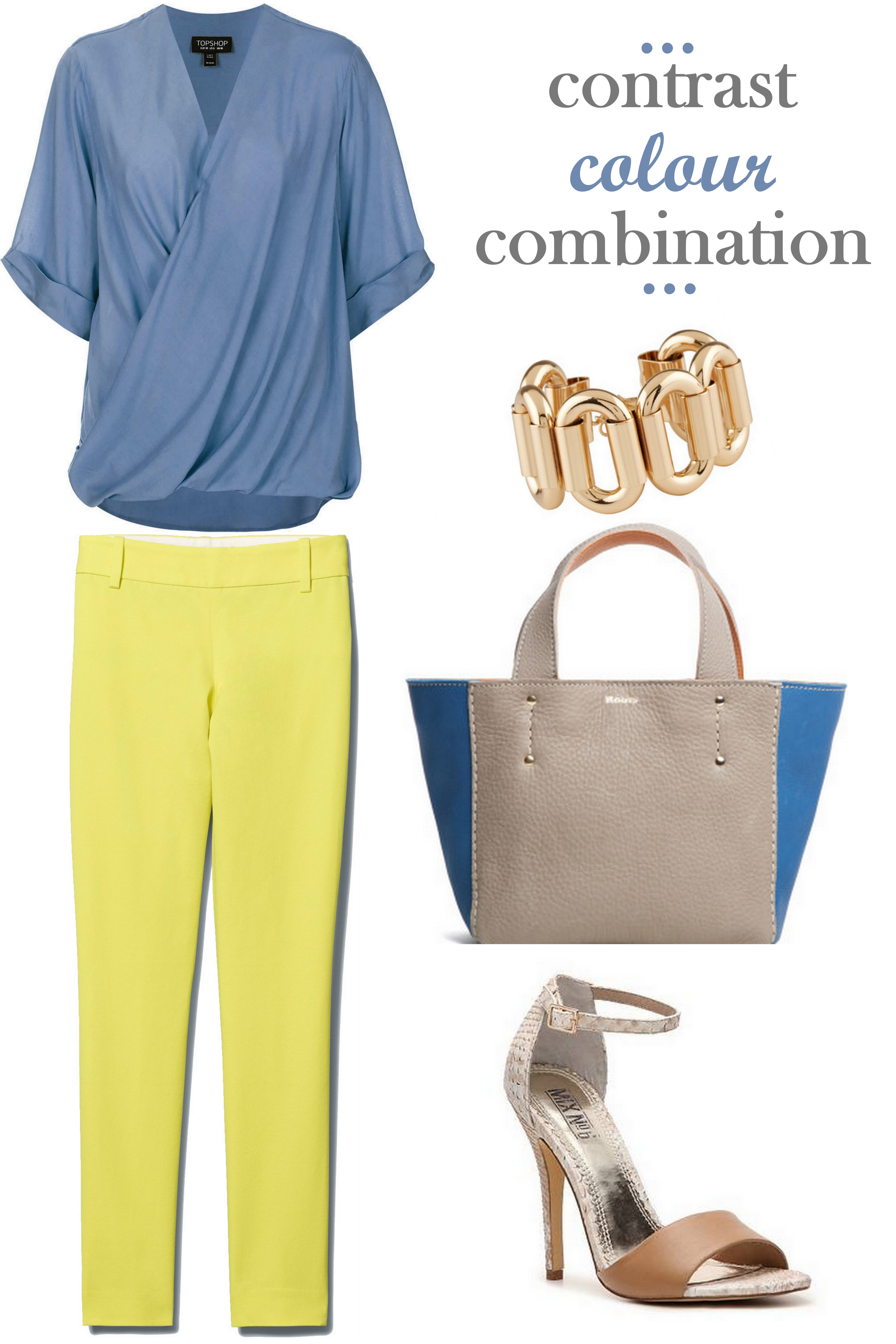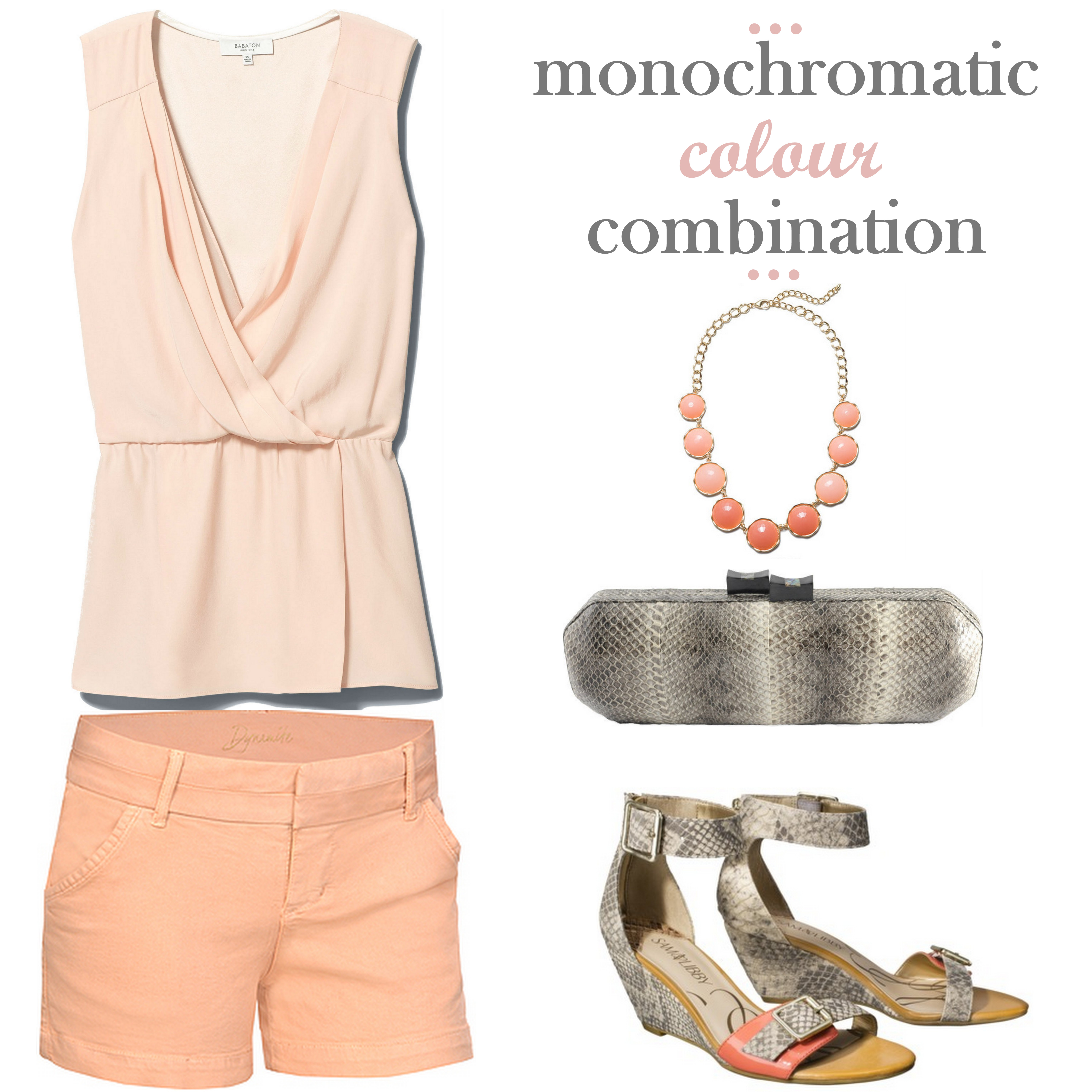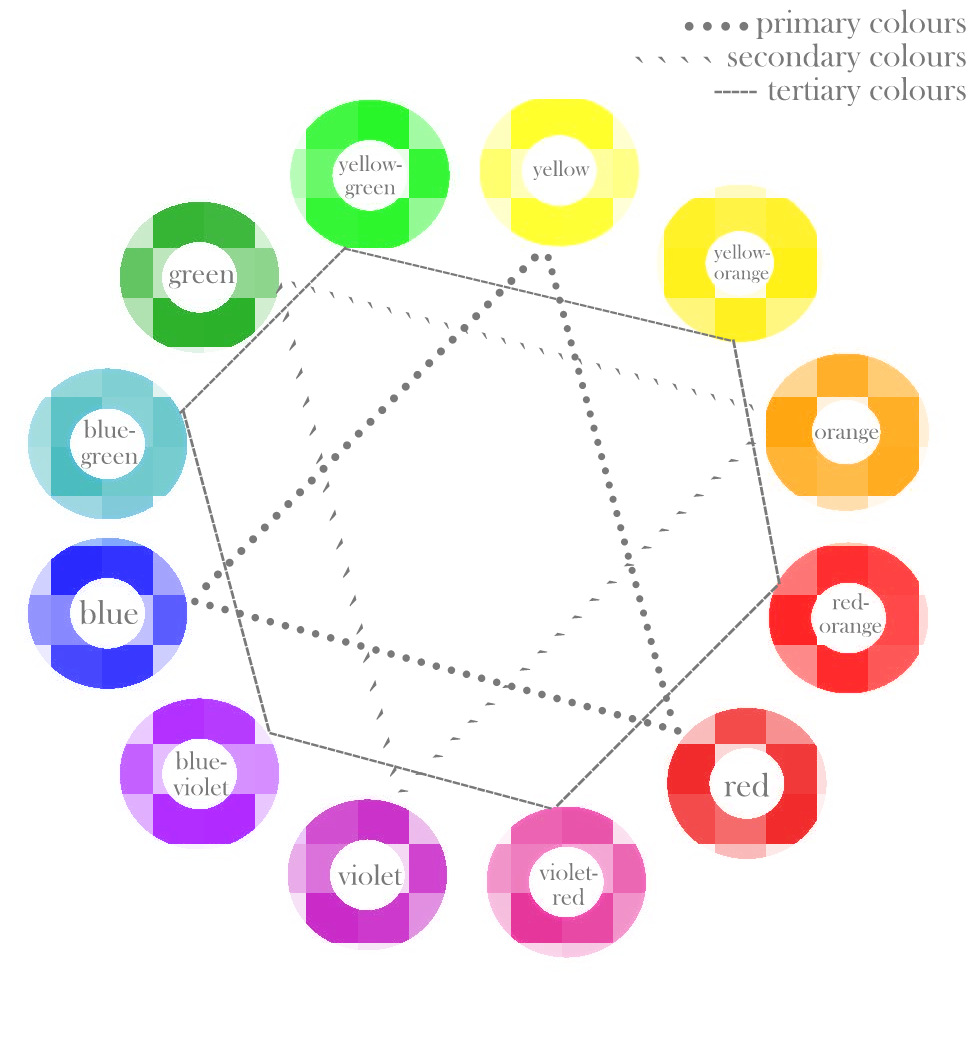Style How To: The Colour Wheel
Excited that the sun is shining and summer is finally here? So are we! Summer is all about being bold and trying new things. Where to start, you ask? How about we try bold this season, by adding a bit more colour to our everyday look? Here we break down the do’s and don’ts of colour and how to use the colour wheel to create new and stylish outfits from your existing wardrobe.
Basics of the Colour Wheel
So we all learned about the colour wheel back in elementary school. But this time instead of painting, we’ll be referencing our clothing. There are three primary colours (blue, red and yellow) that make up all the other colours in the wheel. The secondary colours (green, purple and orange) which are made up of a combination of two primary colours, and lastly, tertiary colours are made by mixing a primary colour and one directly adjacent to it. The way the colour wheel works is that in either directions, the colours graduate to the next primary colour to create a sort of rainbow. The colours on each side of one colour have the same undertone. So for example, violet has undertones of both red, and blue since both primary colours were mixed to create it. So now that we’ve got the basics down, how do we pair them? There are endless ways to create a unique look just by adding (or in some cases subtracting) colour to your outfits. Experiment with a couple of colours just to start, and add on as you get more comfortable with it.
Colour Blocking Combinations
Colour blocking is pairing two or more pieces in a colour story that can really make an outfit pop. It can definitely be a hit or miss, but just keep these tips in mind when you want to try this daring trend. If you look at the colour wheel, you can see which colours are best to contrast each other. Pick your favourite colour and look at the one across from it. These colours will contrast each other creating an illusion of the colours being more vibrant, and makes a chic and daring statement. So don’t be afraid to try out these bold combinations, and remember opposites attract. A common base colour to start off with would be a cool tone such as blue or purple. Then what you do is pair a warm tone to oppose it. For example, below our base colour is blue (a cool tone). The contrasting colour is yellow, which has a warm tone to it. When you put the two colours together, it brings out a more vibrant tone to both the colours which can really give your look some liveliness. If wearing bright coloured pieces is a little too much for you, you can easily bring a bit more interest to a neutral tone outfit with accessories like a bright clutch or pumps.

Casual Drape Top Topshop; Babaton Elliot Pant Aritzia; Lunak Bracelet Aldo; Cutie Bag Biarritz Roots; Charlie Snake Sandal Mix No.6
Monochromatic Combinations
When it comes to pairing different colours to clothes, it doesn’t necessarily mean you have to do it with bold colours. You can pair tones of the same colour for the same stylish effect to create a monochromatic combination. The one thing to keep in mind is that texture will be your friend. If you have a cotton pant, pair it with a flowing silk top. The textures of the different fabrics will help to give partition to your ensemble. Another simple way to achieve this look is by picking a one piece outfit like a dress or a romper and pair with shoes and accessories within the same tone. You will never know if you don’t try, so get creative. Try things on, pair unlikely combinations and chances are if you think it looks good, others will too.

Babaton Ray Blouse Aritzia; Coloured Denim Short Dynamite; Peach Bubbles Necklace Jeweliq; Puttin’ on the Blitz Clutches of Karma; Sam and Libby Sonia Sliver Wedge
Are you as excited as we are to try out these colour combos to your wardrobe? Don’t be afraid to be creative and make your own colour combinations! Comment down below to let us know what you come up with!



